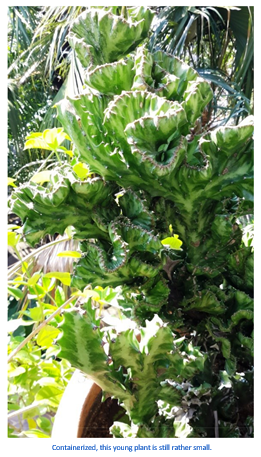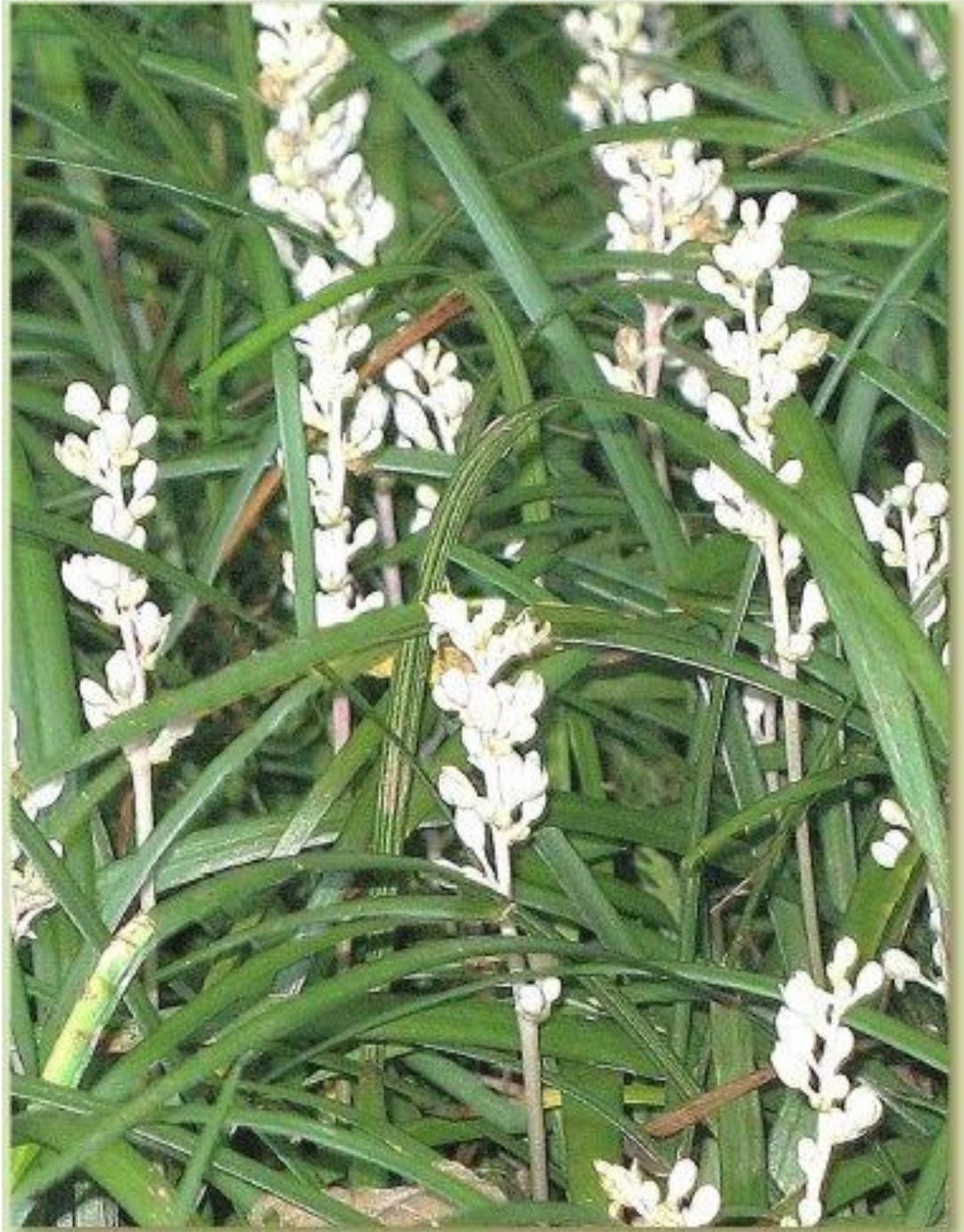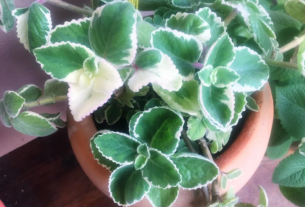By Tommy Clarkson on the October 2020 Edition
 Curiosity Plant Cereus hildmannianus v. monstrose
Curiosity Plant Cereus hildmannianus v. monstrose
Family Cactaceae
Also known as Cereus monstrose (For more, read on!)
Curious and concerned about the health and well-being of various – like me, aging – family and friends, I recently took off from Manzanillo, embarking upon a nearly six week driving trip of some 11,400 miles, All told, this bottom-numbing trek took me through central and northern Mexico and nine US states.
Sojourn finally complete, I’d received but only one speeding ticket! However, I got back to a refrigerator that had stopped working, no water pressure in the house, my truck having been in a wreck with my senior gardener at the wheel, two prized palms killed by the Palm Borer Beetle and at the tail end of two hurricanes which had raised havoc with “my babies.” (Welcome Home Tommy!)
Planted in my seat for that long, following so much driving, my physical and mental condition was, shall we say, a bit gnarly! Hence, while walking the terraces of “The Civilized Jungle,” this character caught my eye and I could but only think, “by name and appearance, how apropos!”
But first, a brief discussion of the genus: it derived its name and was early on described by Philip Miller in the fourth edition of Gardener’s Dictionary, in 1754. Plants of this genus are generally quite large, ribbed and columnar growing. However, there are also species that are epiphytic.
Contorted and deformed in appearance, this particular sun loving cactus equivalent of Quasimodo sports edible, brownish red fruit and white flowers. Native to eastern South America and, perhaps, the West Indies, they can rise up to fifteen feet (4.57 meters) tall and ten feet (3.05 meters) wide. They grow rather fast potentially up to four feet (1.22 meters) a year.
Now, as I understand it, this is a variant of the Cereus hildmannianus a species of cactus from around the Brazil, Paraguay, Uruguay and Argentina areas. However, a bit of further confusion lies with some (include me in there) as to its relationship with the Cereus peruvianus monstrose.
It, too, is beautiful and ideal for use in a large cactus or succulent garden. With its twisting, irregular and undulating pattern on its stem ribs, is it the same or close kin?
Other names by which this is known include: Monstrose Apple Cactus, Andes Organ Pipe, Hedge Cactus, Queen of the Night and Hildmann’s Cereus. But, now, don’t get these confused with the basic, apple like, red fruited Cereus peruvianus! (If my task was to muddle and confuse, I’ve done a pretty durned good job, right?)
But, in a modicum of self-defense, I’m not alone in my befuddlement. One of the authors I consulted stated, “The species…in (this) genus all have certain characteristics only known to Cereus.
Other species have been moved (from it) to several other genera. (Another) author wrote, ‘inclusion by lack of exclusion has made for a very messy and unsatisfactory group’.” In fact, the picture he shows of his specimen extremely similar in appearance to mine that he has labeled as a Cereus forbesii f. monstrose ‘Ming Thing.’ However, he does acknowledge that such a designation “isn’t even an accepted name”.
 Staying with my common and Latin designations, the Curiosity Plant has a very high heat tolerance and needs partial to full sun. But, specimens started in lower light levels should be given time to acclimate to all day, bright sun in order to avoid sunburn.
Staying with my common and Latin designations, the Curiosity Plant has a very high heat tolerance and needs partial to full sun. But, specimens started in lower light levels should be given time to acclimate to all day, bright sun in order to avoid sunburn.
They are extremely drought tolerant but want heavy watering every two weeks but can take more frequent drinks if planted in fast-draining soil and during warm weather. But note that if
containerized, they may require more frequent watering. As to meals, apply a diluted fertilizer in the spring. However, when working around them, keep in mind that they do have a few spines so take care.
As with most cacti/succulents, root and stem rot can become a problem if planted in poor draining soil and given too much water in damp, cool weather. It also is susceptible to scale and mealybugs. However, these can be taken care of through use of a water spray or gentle application of horticultural oil.
Great for usage in a large pot, some gardeners employ them as a striking centerpiece in a sunny, showy locale. They can be rather easily grown from seed or stem cuttings but, if the latter, allow the stem cuttings to callus over before planting in yep, you remembered well-draining soil!
—
Tommy Clarkson is a bit of a renaissance man. He’s lived and worked in locales as disparate as the 1.2 square mile island of Kwajalein to war-torn Iraq, from aboard he and Patty’s boat berthed out of Sea Bright, NJ to Thailand, Germany, Hawaii and Viet Nam; He’s taught classes and courses on creative writing and mass communications from the elementary grades to graduate level; He’s spoken to a wide array of meetings, conferences and assemblages on topics as varied as Buddhism, strategic marketing and tropical plants; In the latter category he and Patty’s recently book, “The Civilized Jungle” – written for the lay gardener – has been heralded as “the best tropical plant book in the last ten years”; And, according to Trip Advisor, their spectacular tropical creation – Ola Brisa Gardens – is the “Number One Tour destination in Manzanillo”.



